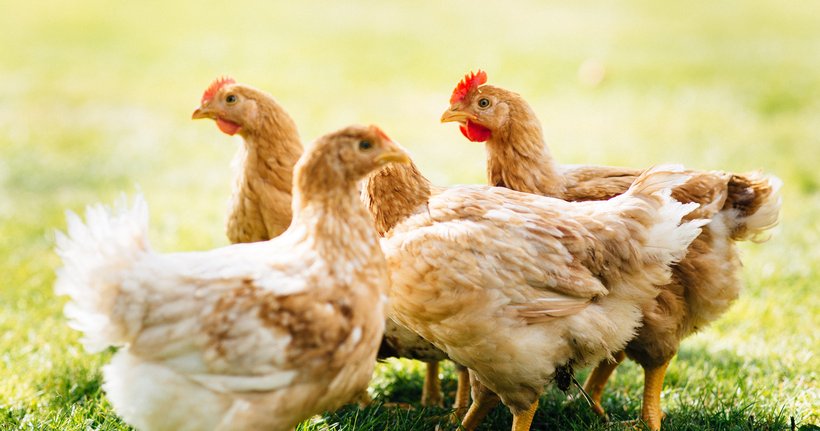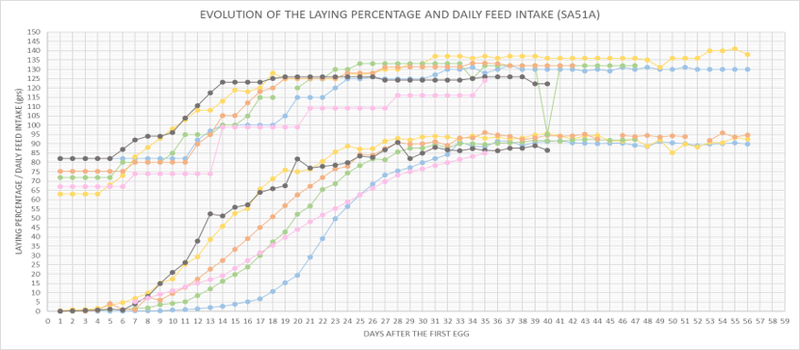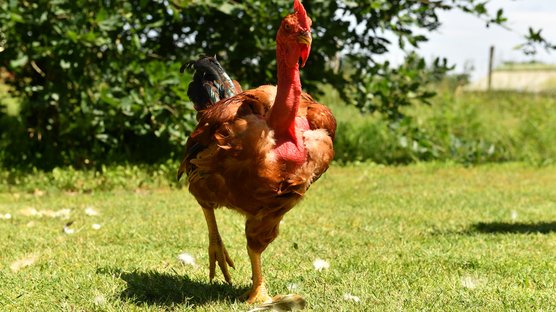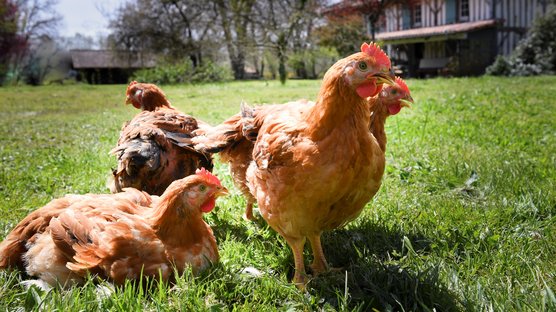
Published on Sept. 14, 2020
Adjusting laying performances before the peak of lay via feed intake
Profitability of a breeder flock mainly depends on the capacity to produce hatching eggs of higher quality and suitable size.
Depending on the market demand, 2 different strategies are affordable: A non-seasonal market that needs a big production of hatching eggs during the whole period of production; A seasonal market that needs higher quality eggs during key periods.
Even though the genetic progress highly determines laying and egg’s size, female breeders’ management is another significant factor. Different management strategies are likely to respond to the market demand. Thanks to their field experiences and travels all around the world, SASSO salesman could experience the different managements and are able to advice their partners depending on their market needs.
Pay attention to the rearing phase
We are close to our business partners’ needs, from hatching, through set-up, to the end of the flock: rearing management, female growth curves, lighting programs depending on the geographical area and the time of the year to monitor as close as possible sexual maturity, feed formulations.
The SASSO technicians know that a profitable flock reflects the rearing phase. To easily approach the laying and egg’s size genetic potentials, female breeders must achieve a 20 weeks of age target weight:
- Heavy birds will lay bigger eggs than light females.
- Early laying will lead to smaller eggs, and vice versa.
Onset of laying: the impact of feed intake
First weeks of lay are critical and important to ensure a production close to the real potential of the breed. Different international rules must be kept in mind. SASSO technicians could have studied these first weeks thanks to the field database. They perfectly know how the SASSO female breeders react when they start laying and how to manage them.
They could also have studied the impact of the feed intake on the laying performances and egg’s weight and size. In fact, the first days/weeks of lay must be closely managed. From the very first egg, 2 different markers must be daily controlled: daily laying and the evolution of the egg’s weight. These indicators will tell you how much you should increase the feed intake per hen and the light.

Flocks represented on the above table show us the different laying behaviors depending on the daily feed intake increase.
The black curve shows a quick increase of the feed intake 5 days after the very first egg. This increase is about +4.7grs / hen / day until the peak of feed intake that is 125grs. The knock-on effect on the laying can be easily seen: the quick increase of the feed intake leads to a quick respond of the laying that reaches the 40% of lay only 12 days after the very first egg.
The blue curve shows a totally different behavior. The daily feed intake increase is close to +4.1grs / hen / day. However, it was first increased 11 days after the very first egg. The impacts on the laying performances are easy to see once again: the daily laying increase is slow until we reach the 10% of lay; and then fast. The 40% of lay are reached 22 days after the first egg.
Finally, the pink curve is a far too frequent case and interesting to observe. Too many partners manage the first days/weeks of lay on a weekly management. This curve shows that you’re likely to achieve the best performances managing the flock daily. In this case, the daily feed intake increase is close to 1.5grs / hen / day until the peak of feed intake (125grs). Even though the first increase was made shortly after the very first egg, the impact on the laying performances is negative: a slow increase of the lay, to reach the 40% of lay 19 days after the very first egg.
The production’s gap between 2 different flock can be made during the first weeks of lay.
Feed intake increase and egg’s weight evolution
These different behaviors show us that 2 different technical tools must be considered: the daily feed intake increase, and the time-lapse between the very first egg and the feed stimulation. From the first egg to the peak of lay, feed intake must quickly increase to meet the nutritional needs of the female breeders for: maintenance, growth and production. This means that female breeders need to be prepared to ingest big quantities of feed during rearing. Not preparing the breeders during that critical period would have negative and irreversible consequences on the laying performances. It is therefore important to daily manage the flock.
On the second hand, feed intake has an impact on the evolution of the egg’s weight.

Evolution of Egg weight in g (lower curve) and feed intake (higher curve) on a SA51A flock
The table above shows the thick link between the daily feed intake increase and the daily egg’s weight increase. Whenever feed intake is increasing, the egg’s weight is increasing as well. On the contrary, whenever the feed intake is stable for a few days in a row, so is the egg’s weight.
The daily feed intake increase has an impact on the laying performances and the egg’s size. A quick increase (daily increase from 0.5% laying) of the feed intake is necessary to assure a well increase of the lay. This would also give suitable hatching eggs that can produce high quality chicks. However, depending on the market demand, increasing too fast the daily feed intake would make the egg’s grow to fast as well. Having big eggs can have a negative impact on the laying performances. This could reduce the total number of hatching eggs. We know it, a female doesn’t lay a Number of eggs, but an egg mass. A compromise is therefore necessary when stimulating the breeders after the very first egg. To be defined.
Finally, light stimulation needs to be in keeping with feed stimulation. This would stimulate all the females at once assuring a good production.
Take home messages
Flock management is an environmental factor that needs to be considered to assure a sufficient profitability of the breeder flock. It is important to well manage during rearing to assure a good growth of the breeders and a well-formed skeleton. The main target during rearing is to have a uniform, robust and healthy flock to start in production. This would allow them to express 100% of their genetic potential on the field. It is therefore more than important to follow SASSO technicians’ advices that constantly study performances on the field.




